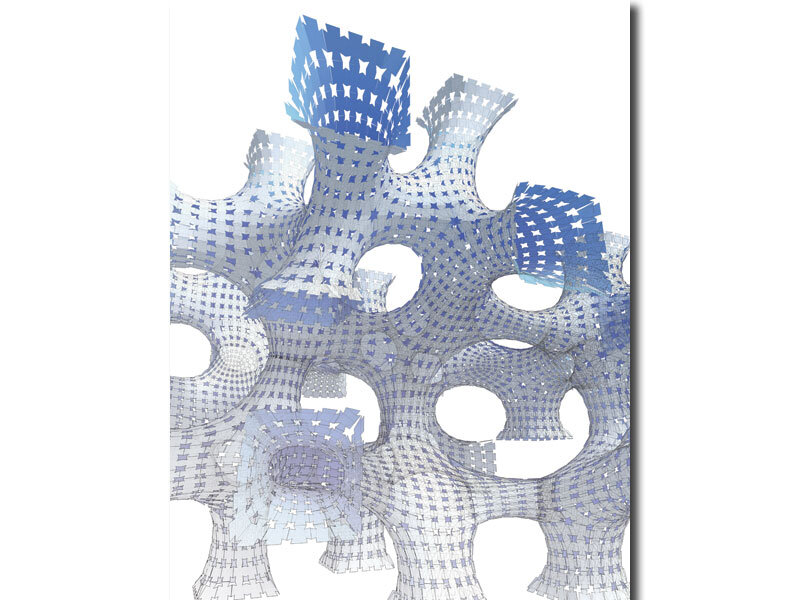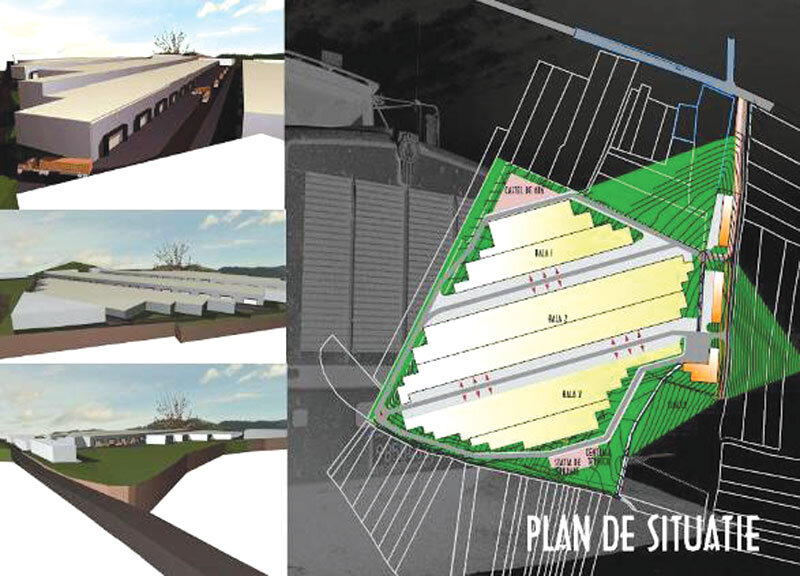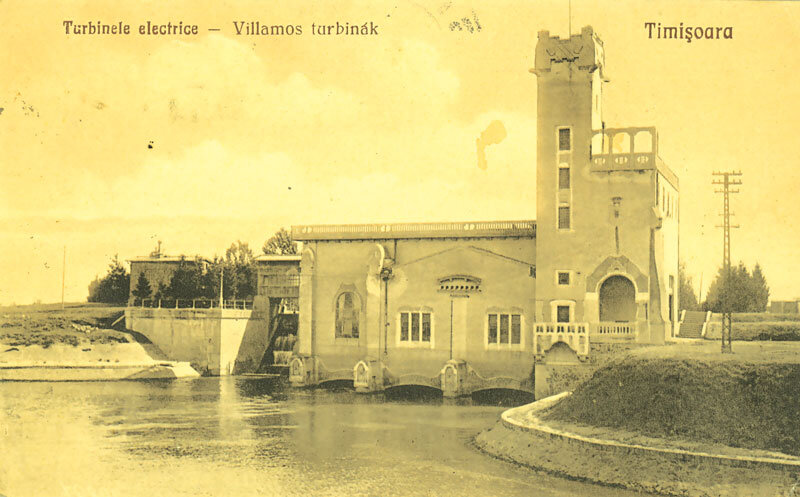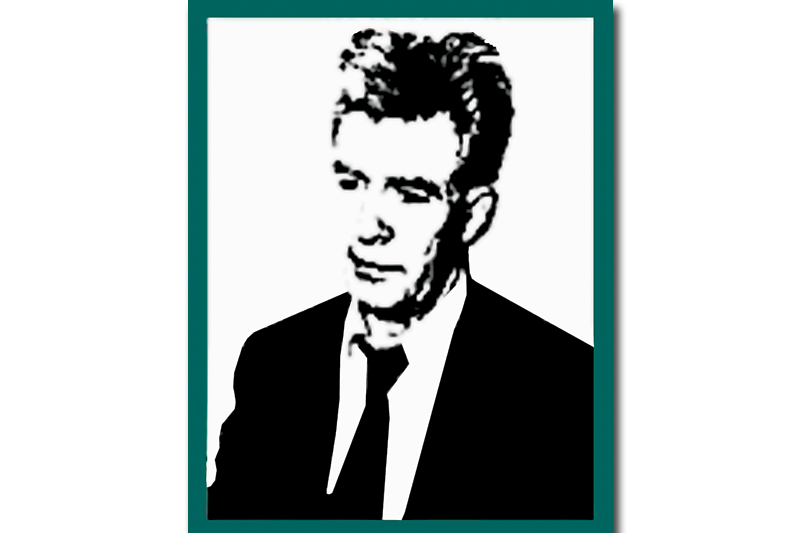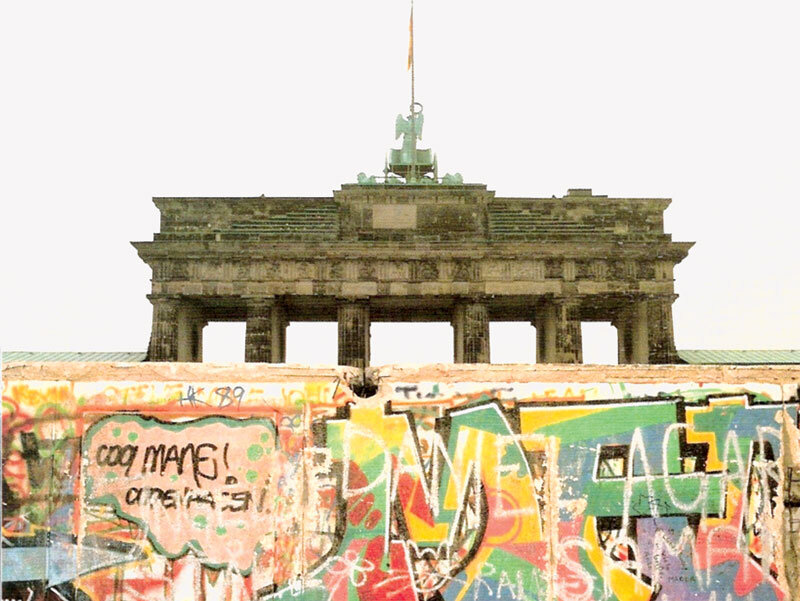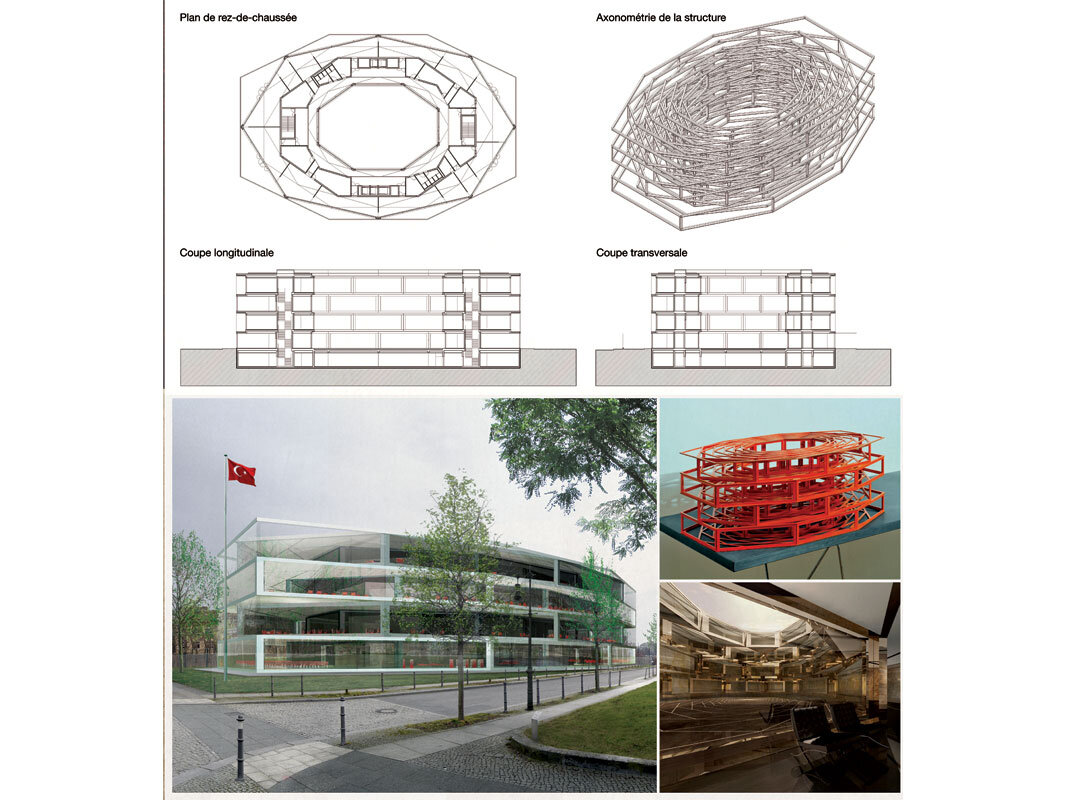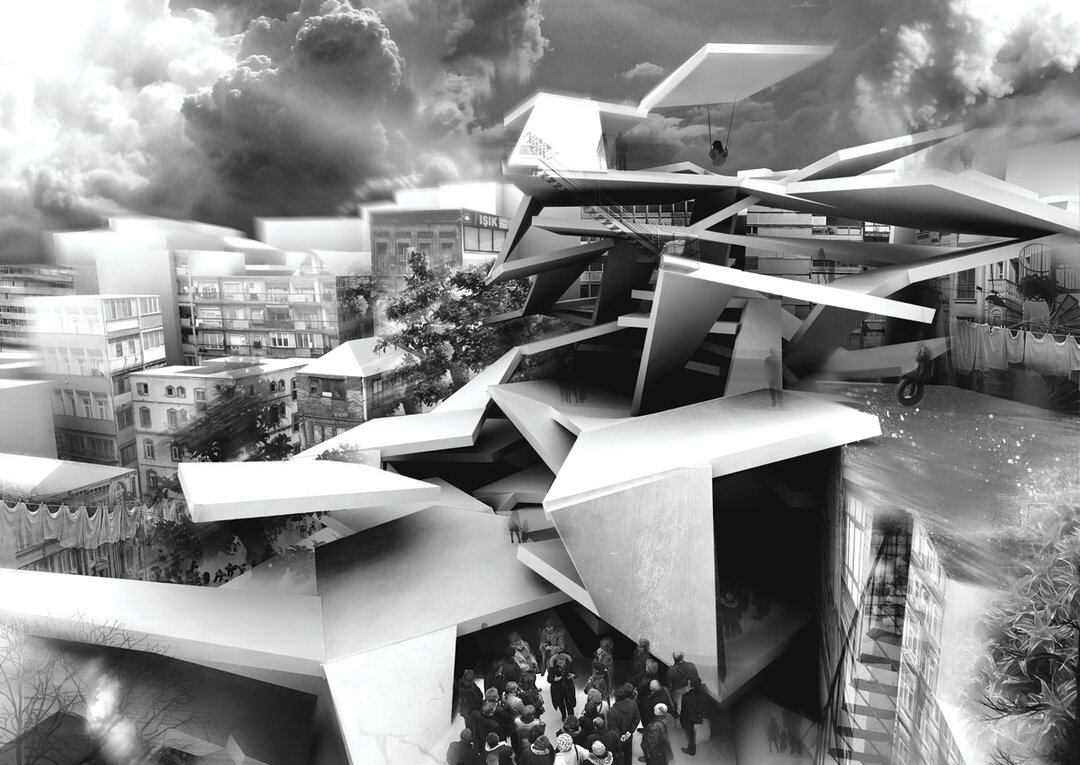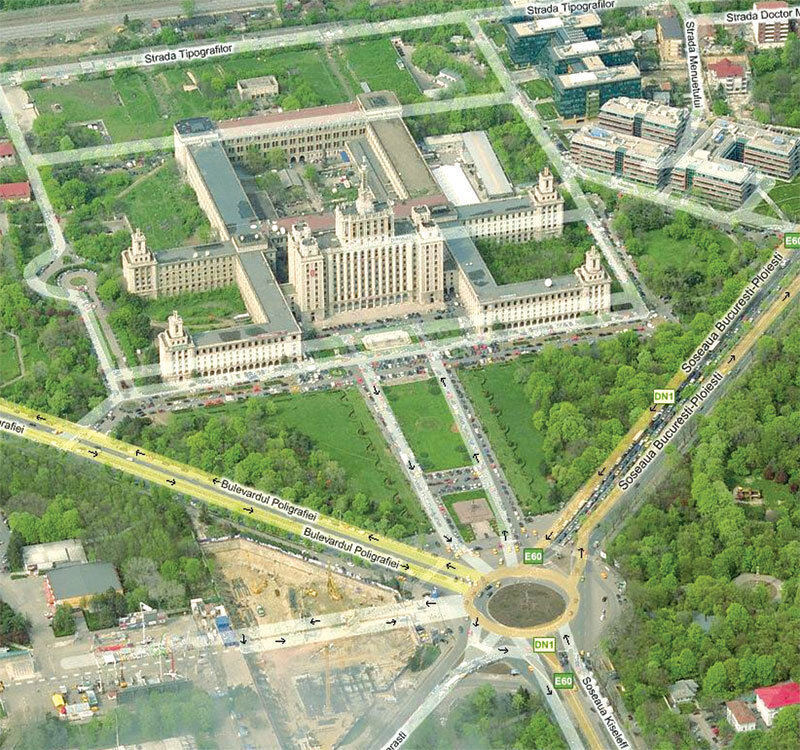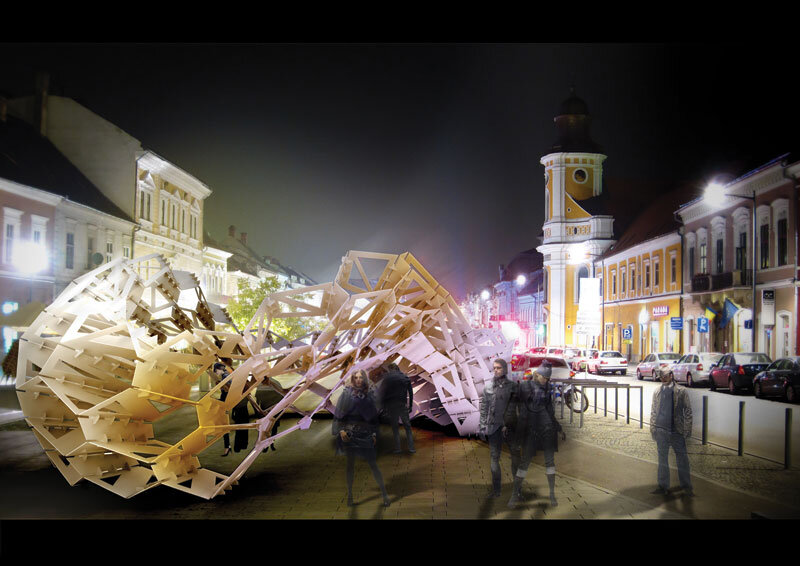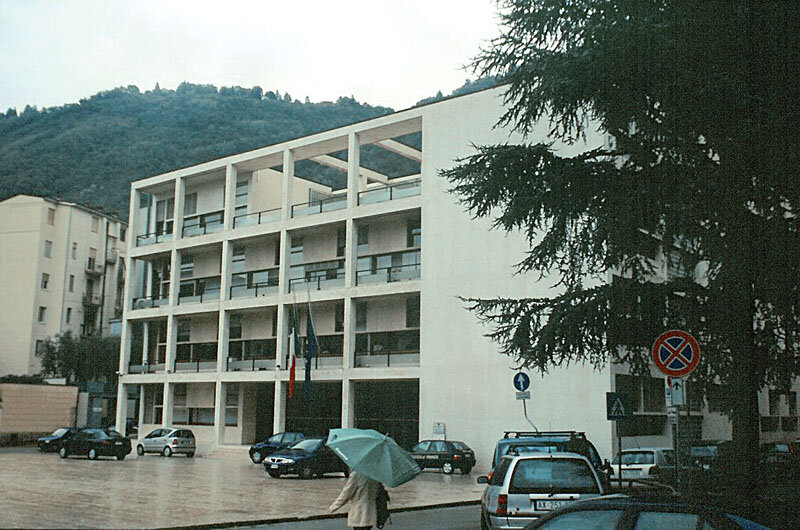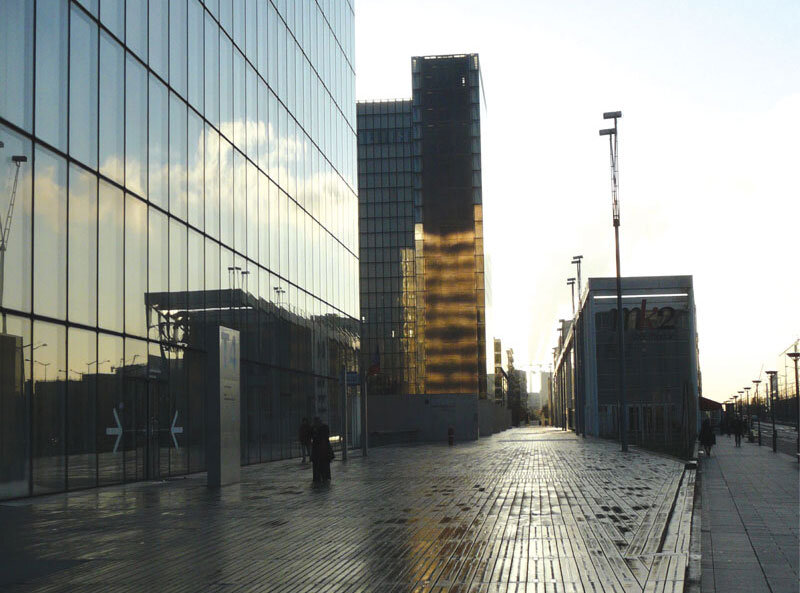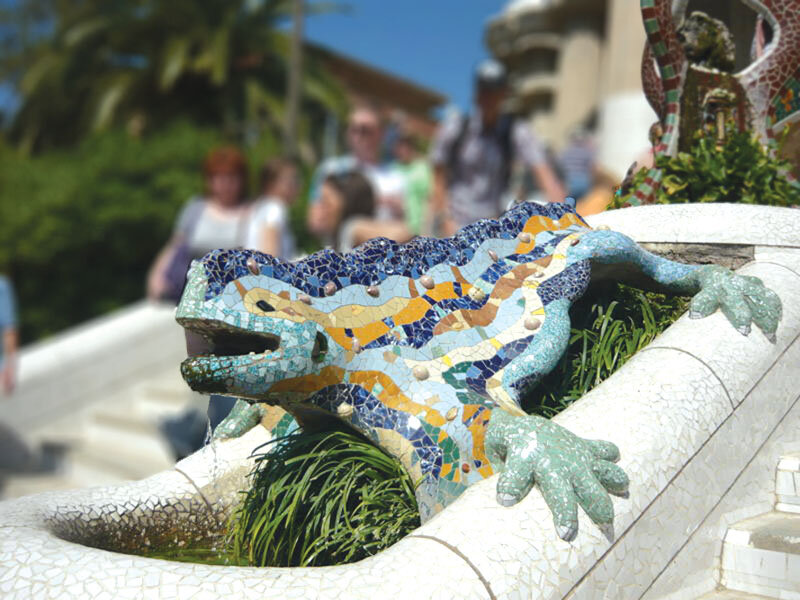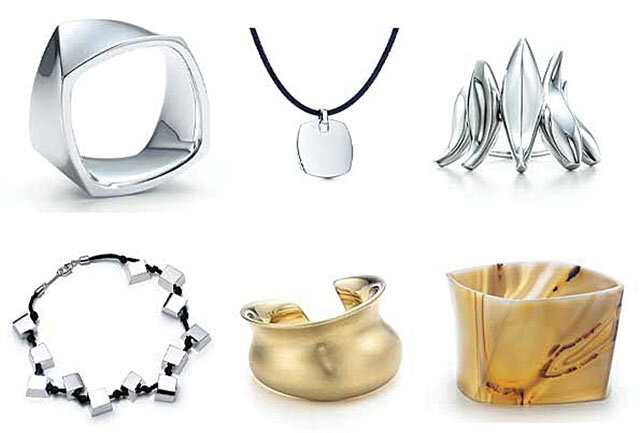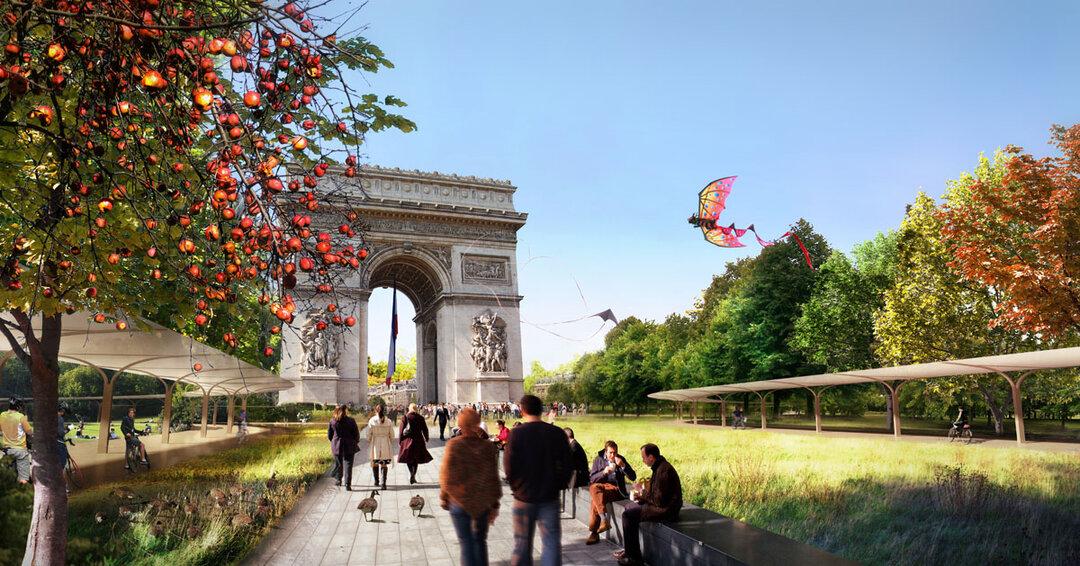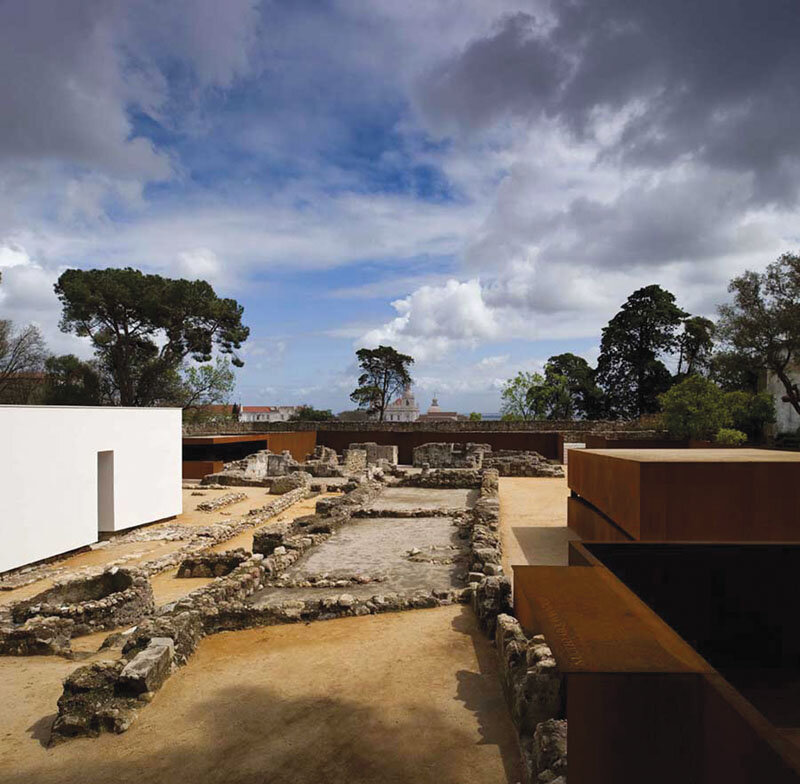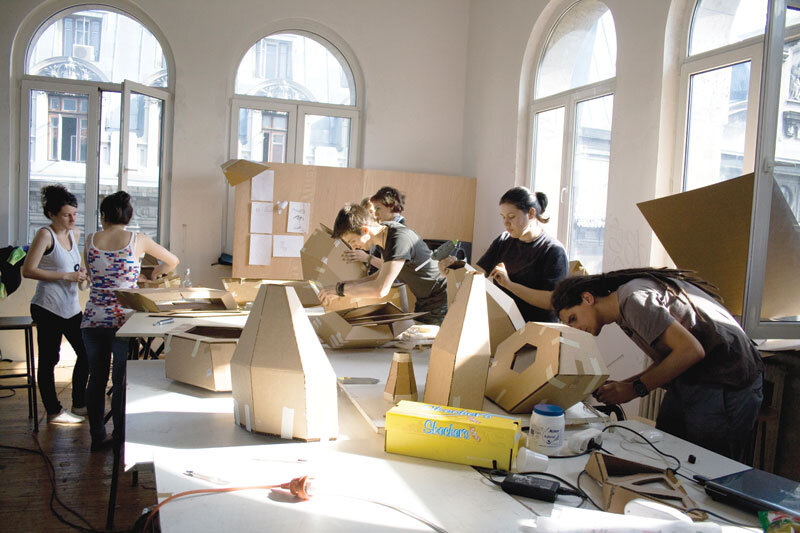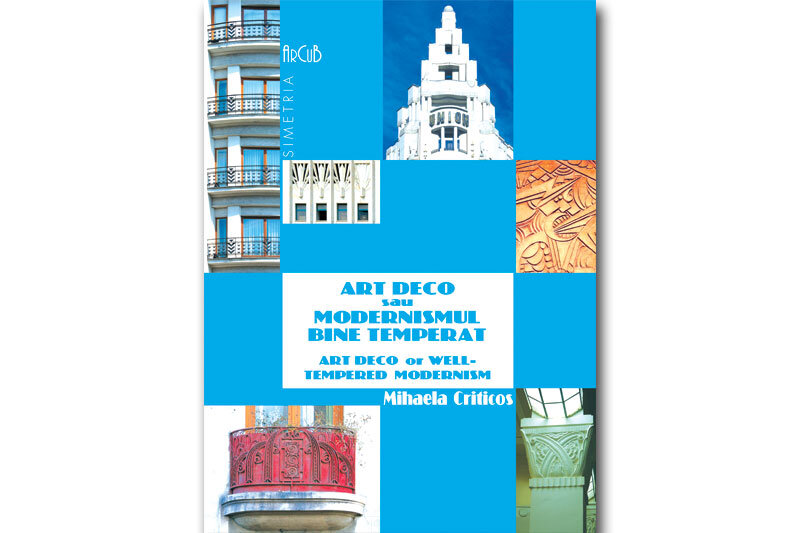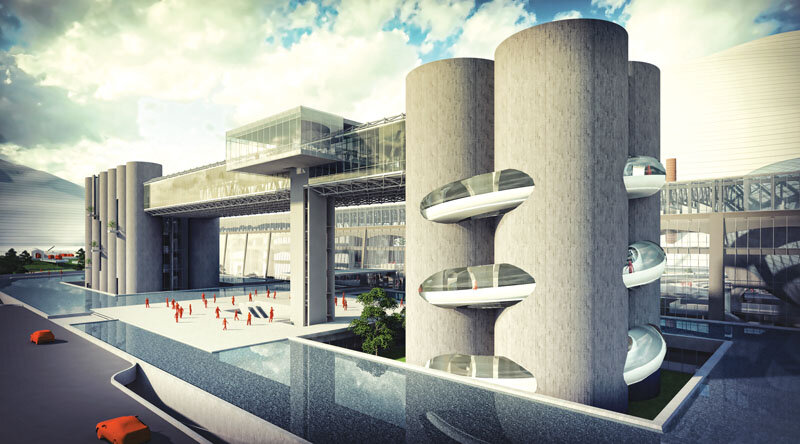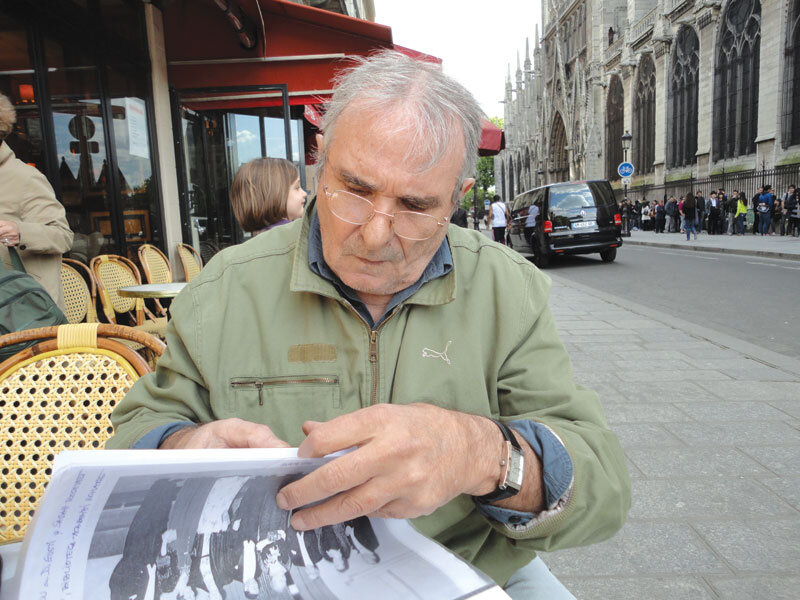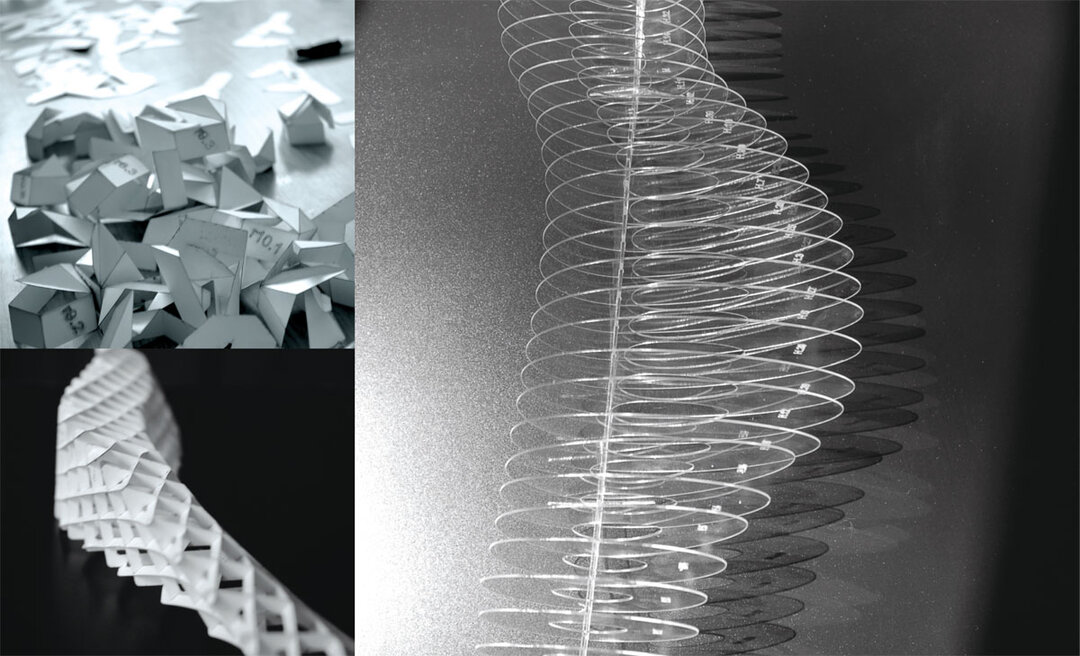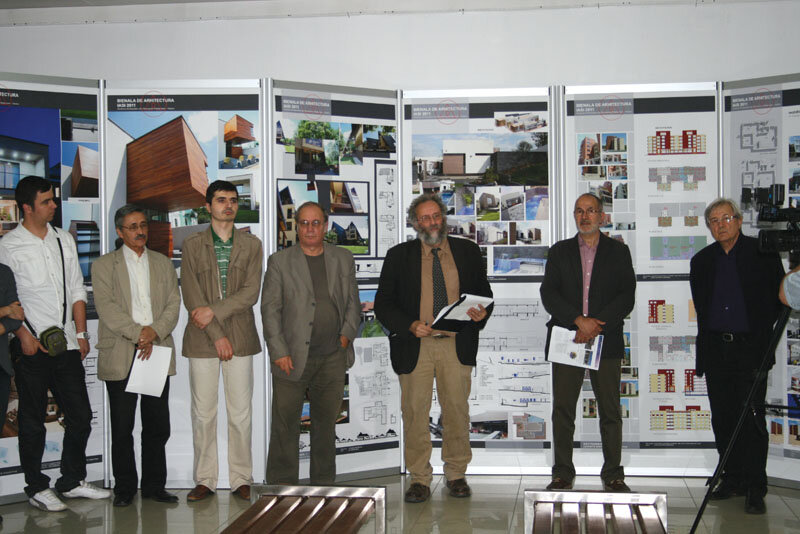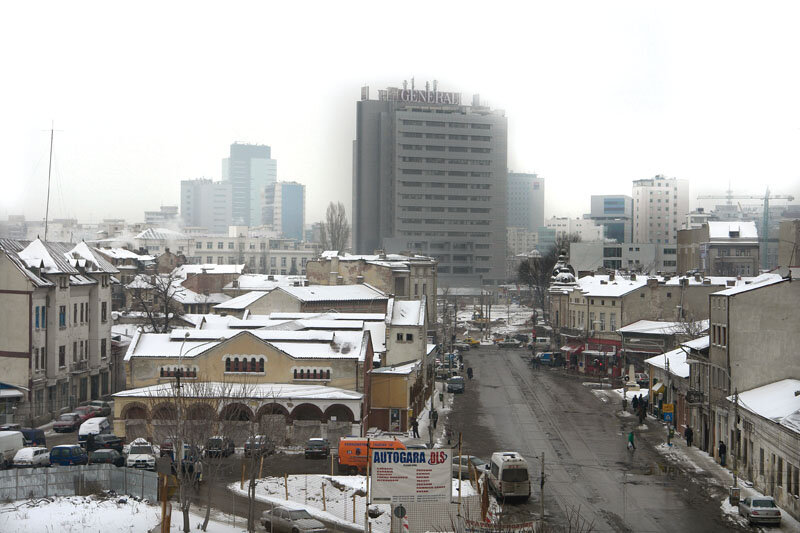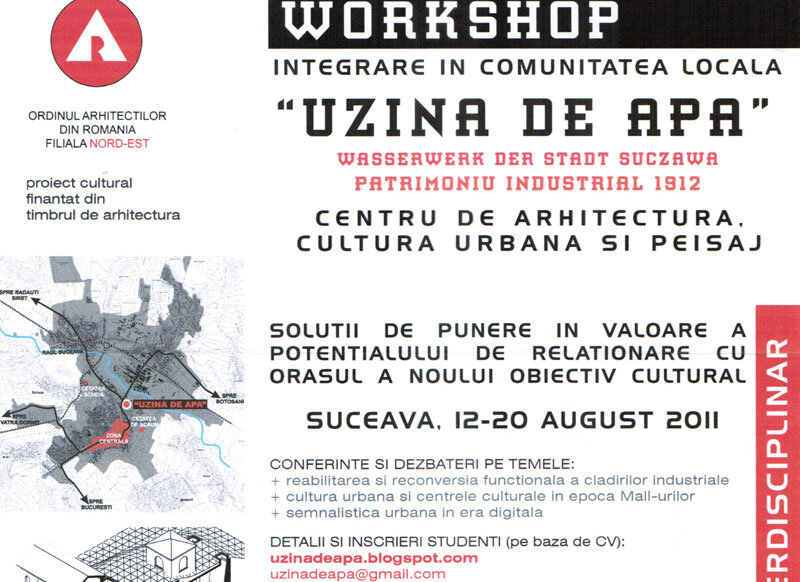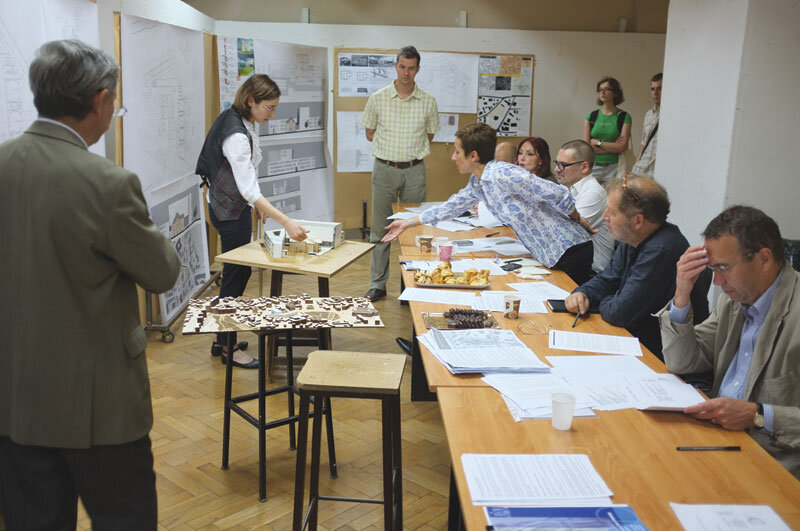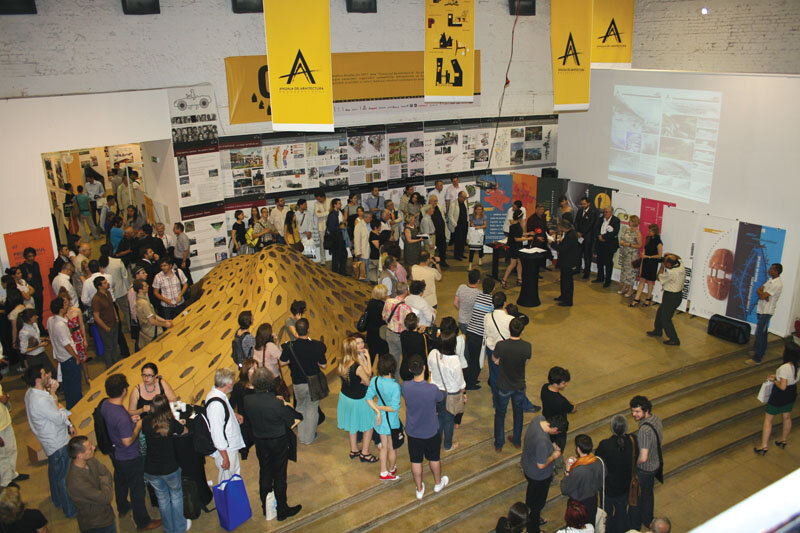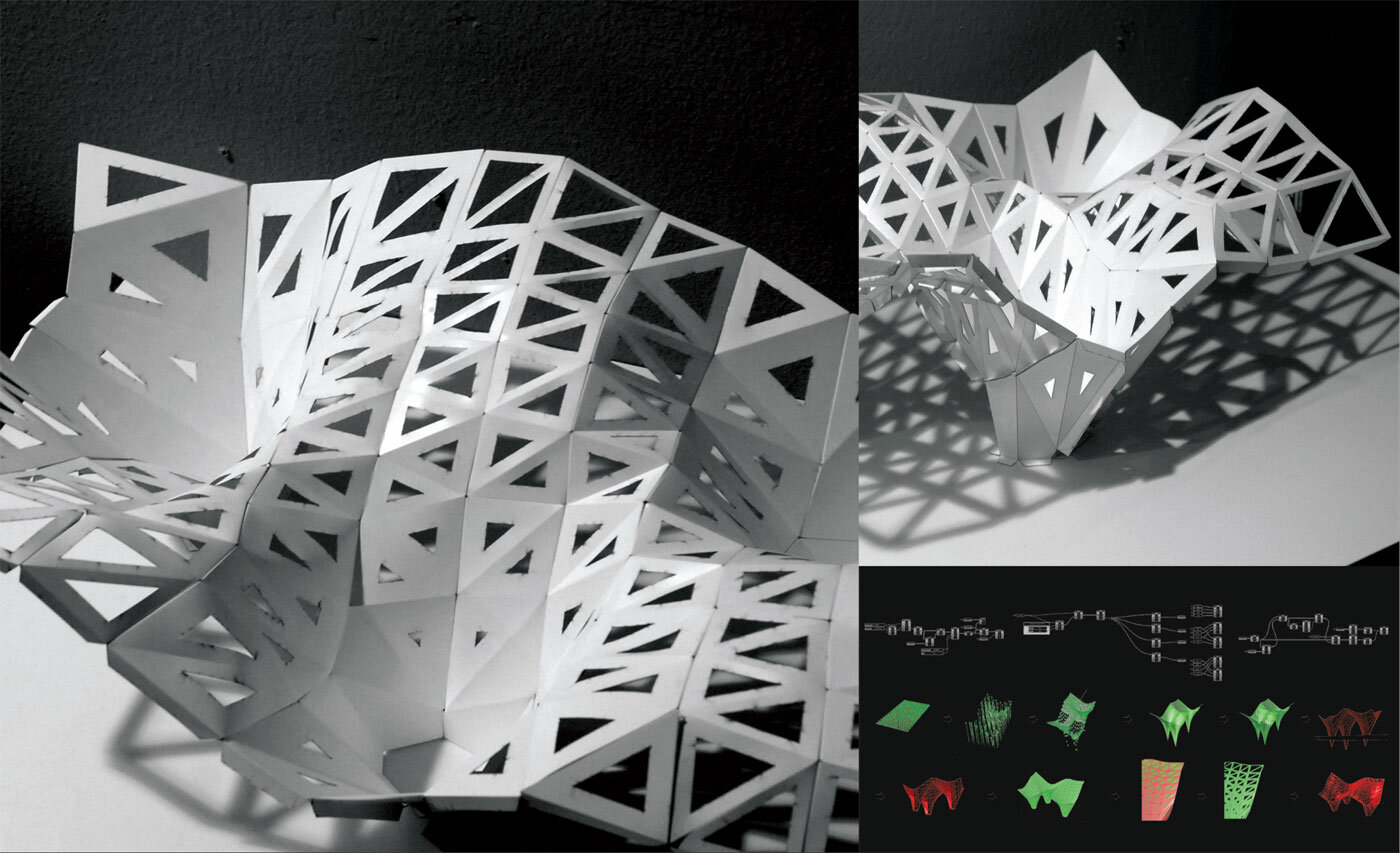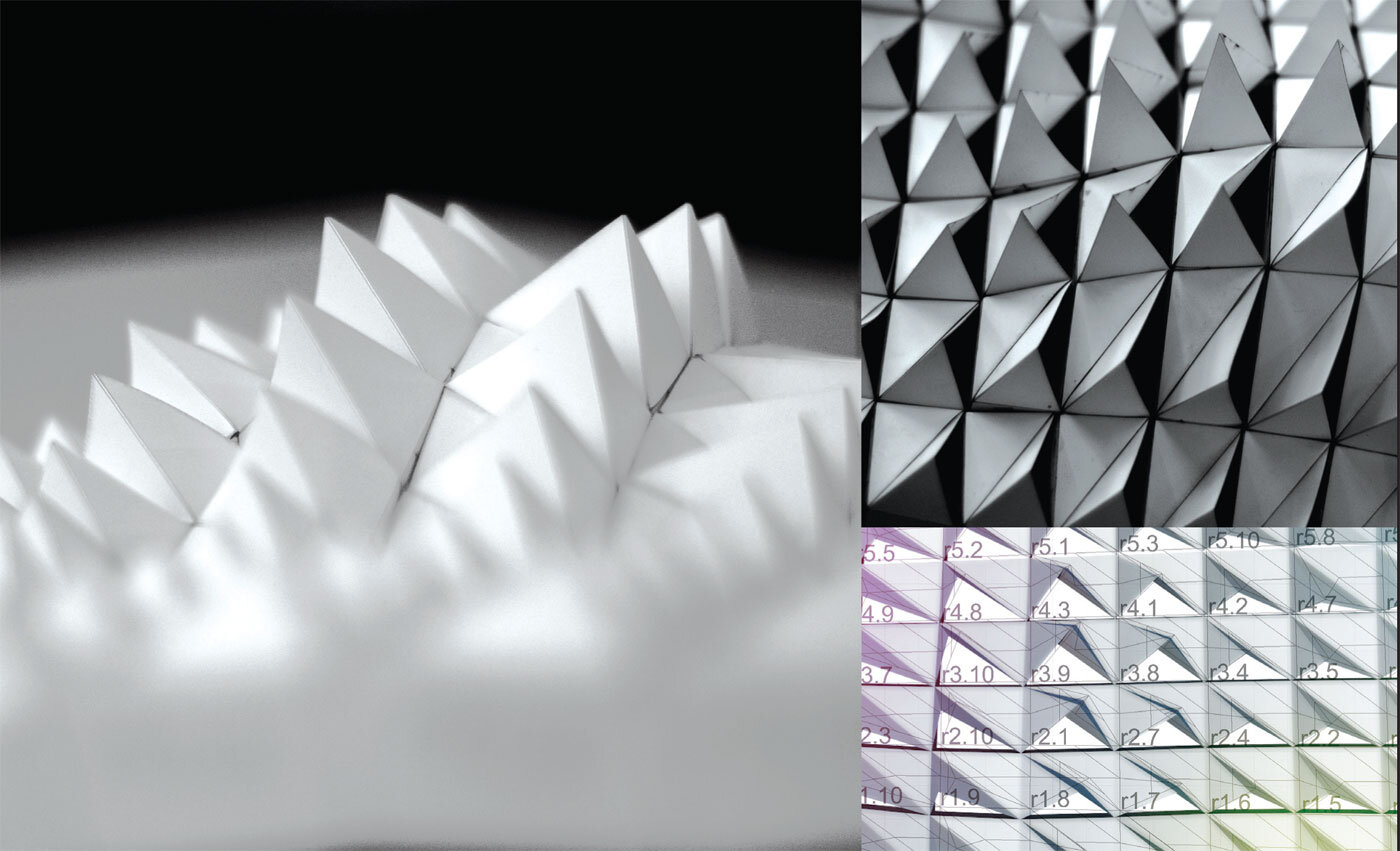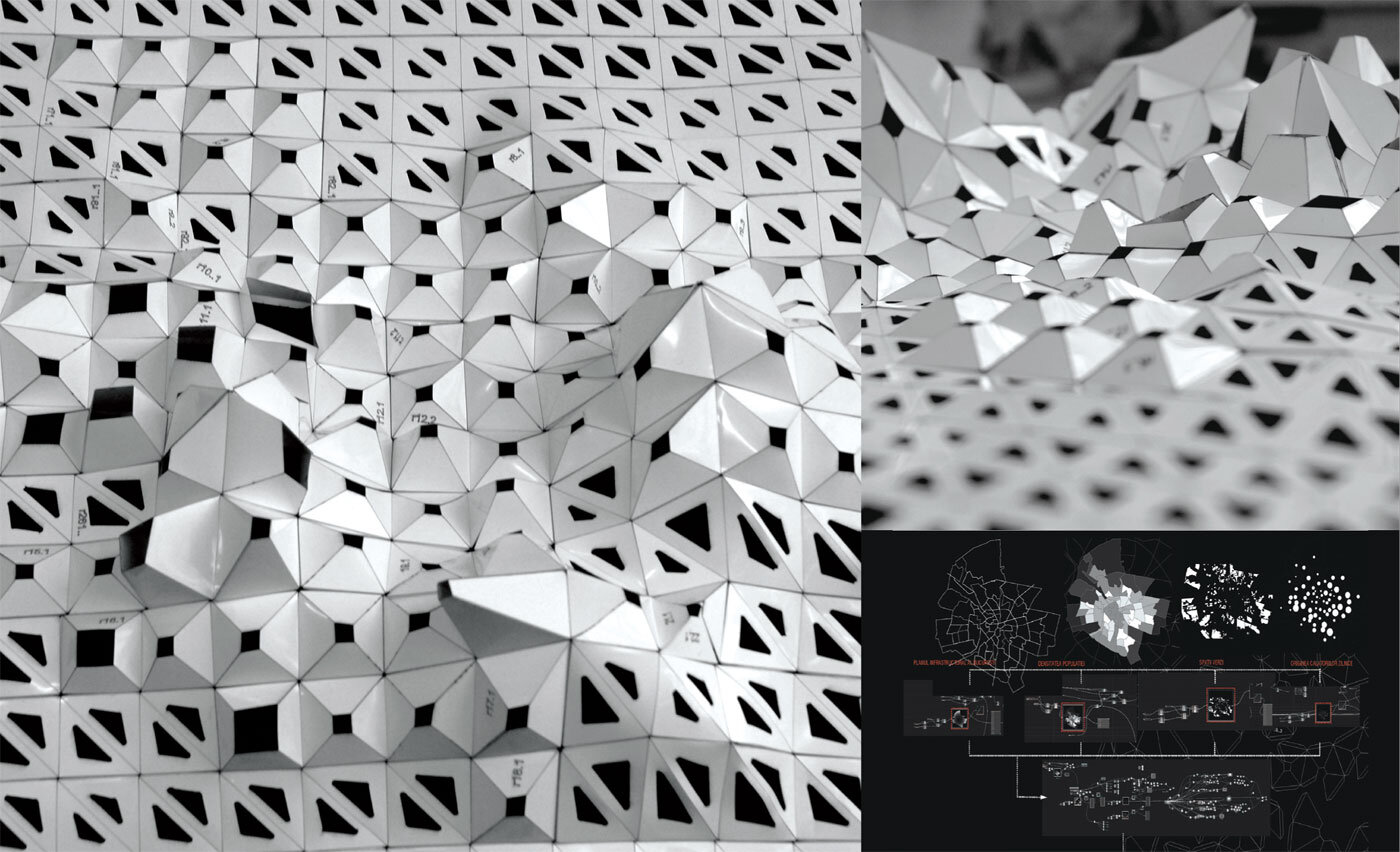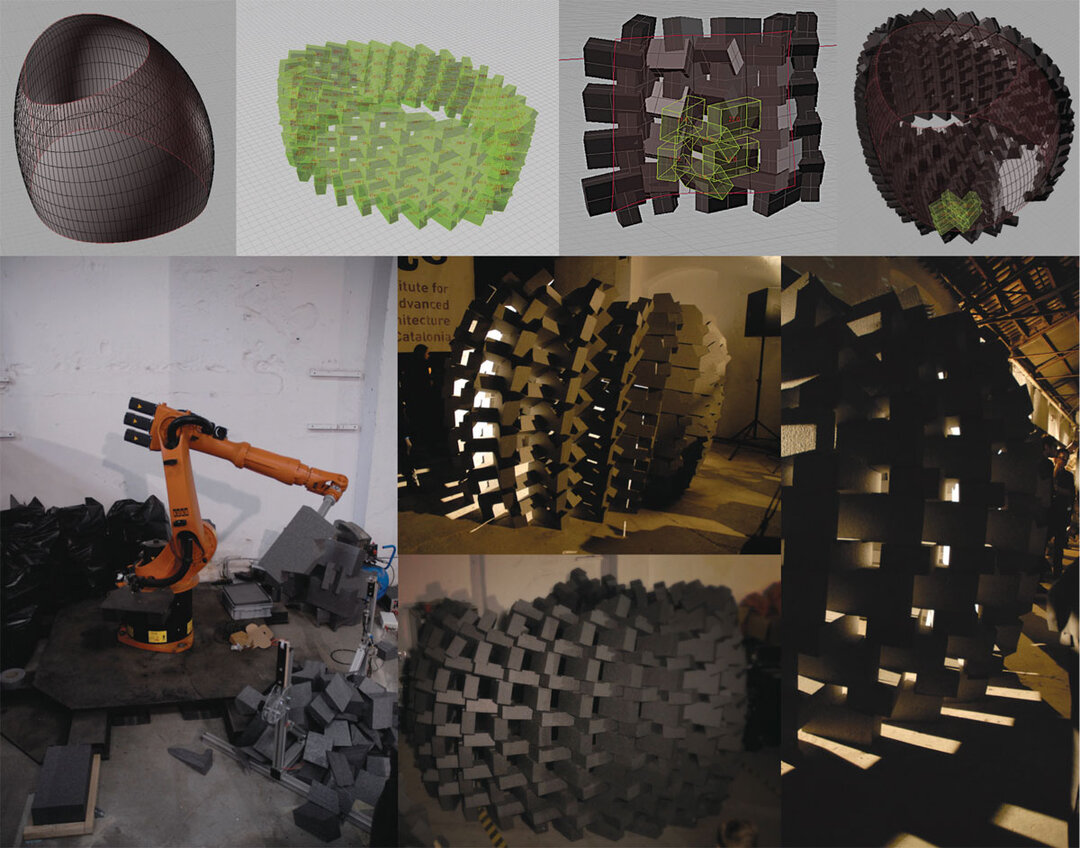
Digital formal search. Parametric reactive surfaces
Digital Form Finding. Reactive Parametric Surfaces
| The workshop "Reactive Parametric Surfaces" was held on April 23-26, 2010, at the University of Architecture and Urbanism "Ion Mincu", Bucharest. |
| The workshop "Parametric Reactive Surfaces has been held at "Ion Mincu" University for Architecture and Urbanism during the 23-26 of April 2010. |
| A statement like "form follows function" [1] would be meaningless today. Nowadays, one can no longer say that form is a result of function, nor even the other way around, but form and function are both interdependent, joining many other concepts in a parametric scheme of an architectural object [2]. Architectural form thus appears as a negotiation between generative concepts, as a complex system in which local rules governed by concepts give rise to an emergent form. Such an architectural form is more than the sum of its component parts, a result of all the concepts involved, but governed by none of them. Just as in biology we see the formation of organisms based on self-organization, in which there is no central generative element, a mother cell, so in architecture form is the result of the interaction of integrated architectural concepts. Relationships such as 'form results from function' are no longer necessarily necessary, but rather form is generated by the dynamic and interdependent relationship between a multitude of factors (agents) including function, performance and stability. Such an approach paves the way for a parametric architecture that responds to context transformed into a data stream, in which the manipulation of each component part is influenced by control mechanisms, parameters, that make it possible to manage changes through a finite set of variables. Thus, we witness the genesis of a form found through computation rather than made. The architects of the last decade adopt formal search as a method by which both natural and digital processes of self-organizing forms are instrumentalized under the influence of extrinsic forces. Antoni Gaudi and Frei Otto are among the first architects to use a physical formal search of material to determine optimal structures under the action of gravity. Thus, Gaudi's hanging structures [3] and Frei Otto's soap bubble mathematics [4] determine novel architectural forms, performing an elegance of invisible forces in equilibrium. The formal search has been embraced by the digital avant-garde over the last two decades as a design method that can negotiate between the various contextual forces shaping architecture with a complexity never before encountered. Through formal search, form and forces are correlated by means of rules, bringing about a state in which the forces acting on form are in relative equilibrium. The following projects present various digital formal search experiments as they were developed during the workshop "Reactive Parametric Surfaces" at the "Ion Mincu" University of Urbanism and Architecture, which was led by Ionuț Anton and Dimitrie Ștefănescu. The aim of the workshop was to introduce a group of students to the field of parametric design with its theoretical foundations and functional logic, as well as to acquire technical skills in the use of parametric design programs (Rhino [5] + Grasshopper [6]). This technical and theoretical knowledge will then be tested in the realization of parametrically modeled surfaces responding to context conditions. |
| Currently we cannot say that form is a resultant of function, nor the opposite, instead form and function are both interdependent, joining a series of concepts in a parametric diagram of an architectural object [2]. Architectural form today is a negotiation between generating concepts, just like a complex system in which local rules governed by concepts give birth to an emergent form. Such an architectural form is more than the sum of its parts, a result of all the involved concepts, but not governed by any one of them. Just as in biology, where we witness the formation of organisms based on self-organization, there is no central generating element, a mother cell, so to speak, so the architectural form is the result of the interaction between integrated architectural concepts. Relations like "form follows function" are no longer necessary, but rather, form is generated by the dynamical and interdependent logical rules established between a variety of factors (agents) including function, performance and stability. Such an approach opens the way for a parametric architecture that responds to its context transformed into a data stream, in which the handling of each component is influenced by control mechanisms (parameters) that enable the management of variation through a finite number of variables. Thus we are witnessing the genesis of forms found through computation, rather than forged. Architects of the last decade adopted form-finding as a method in which both natural and digital processes of self-organization of forms are instrumentalized under the influence of extrinsic forces. Antoni Gaudi and Frei Otto are among the first architects to use material physical form-finding to determine optimal structures that act under the action of gravity. Thus Gaudi's hanging structures [3] and Frei Otto's mathematics of soap bubbles determine surprising architectural forms, by performing an elegant balance of invisible forces. Form-finding has been embraced by the digital avant-garde in the last two decades as a design tool that can negotiate between various contextual forces that shape an architectural complexity as never before. Through form-finding, shape and forces are linked by rules, resulting in a state of relative balance of the forces acting on the form. Following projects present different experiments for digital form-finding, as they have been developed in the workshop for "Parametric Reactive Surfaces" held at "Ion Mincu" University for Architecture and Urbanism, and tutored by Ionuț Anton and Dimitrie Stefanescu. The workshop goal was to present a group of students with the theoretical framework for parametric design and the acquisition of technical skills for parametric design software (Rhino [5] + Grasshopper [6]). This technical and theoretical knowledge was tested in the development of surfaces parametrically modeled to meet certain context criteria. |
| NOTE / NOTES: [1] trad.ns. forma urmează funcțiunea - concept susținut de Louis Sullivan / form follows function is a concept introduced by Louis Sullivan. Louis H. Sullivan, "The Tall Office Building Artistically Considered", 1896, http://academics.triton.edu/faculty/fheitzman/tallofficebuilding.html. [2] Patrik Schumacher, The Autopoiesis of Architecture: A New Framework for Architecture: John Wiley and Sons, 2011. [3] Mark Burry, "Digitally Sponsored Convergence of Design Education, Research and Practice", in Computer Aided Architectural Design Futures 2005: Springer Netherlands, 2005. [4] Frei Otto et al, Finding Form: Axel Menges, 1995. [5] Rhinocerous 3D is a generic modeling software that has the possibility to implement gometric algorithm through scripting / Rhinocerous 3D is a generic modeling software that has the possibility to implement gometric algorithm through scripting [6] Grasshopper is a plug-in for Rhinocerous that allows for a visual editing of a geometric algorithm / Grasshopper is a plug-in for Rhinocerous that allows for a visual editing of a geometric algorithm [7] Frei Otto et al, Finding Form: Axel Menges, 1995. [8] Bernard Cache and Michael Speaks, Earth moves: the furnishing of territories: MIT Press, 1995. |
|
TEXT: Ionuț Anton, Dimitrie Ștefănescu PHOTO: Chiriță Alexandru, Ionuț Anton, Dimitrie Ștefănescu |
STRUCTURA SPAȚIALĂ DIFERENȚIATĂ / DIFFERENTIATED SPATIAL STRUCTURE
Team / Team: Ana Dabija | Mihai Burloiu | Andrei Petcu | Andreea Nica | Laura Bogoi
| The project proposes the realization of a spatial structure that starts from the relation between shape, force and mass and simulates the generation of a shape by natural lines of force concentrated on three points in a spatial frame. Starting from a grid of equidistant points, the geometry is modified by a formative process reminiscent of the flow of sand grains in Frei Otto's experiments [7]. The resulting shape, determined by a function of the distance of each point from the nearest point of influence, is a description of a surface resulting from the natural flow of gravitational forces towards these points of influence. This resultant continuous surface is discretized and subdivided into triangular shapes that can be subjected to a manufacturing process by cutting from planar slices. To further differentiate the surface a system of perforations has been used which determines a degree of openness of each triangulation according to its height, so that the structure becomes lighter as it rises. Such a rule also makes the lower triangulations, which support the whole structure, the strongest. |
| The project proposes to achieve a spatial structure that starts from the relationship between form, strength and mass, and simulates the generation of a form by natural lines of force concentrated on three points in a grid space. Starting from regular grid of equally spaced points, the geometry is modified by a formative process that reminds of the grain of sand flow experiments conducted by Frei Otto [7]. The form, determined by a function of distance from each point in the grid to the nearest point of influence is a description of a surface that replicates the flow of natural forces of gravity towards the points of influence. The resulting continuous surface is discredited and divided into triangular shapes that can be subject to a manufacturing process by cutting flat strips of material. To further differentiate the surface, a perforation system was used that determines the aperture of each triangulation according to height of the face, so that the structure becomes lighter as it rises. Such a rule also determines that the triangulation at the bottom to be the strongest, as it supports the whole structure. |
PROIECTARE PRIN COMPONENT / COMPONENT DESIGN
Echipa / Team: Veronica Popescu | Chiriță Alexandru | Pătru Vlăduț | Maria Oancea | Irina Nedelcu | Andreea Druga
| The project proposes a bottom-up strategy, in which the starting point is a single component, proliferated on a surface, which through local deformations determines a global geometry. The component thus becomes the geometric representation of all the intrinsic rules that lead to the generation of form. In philosophical terms, a component can be seen as Bernard Cache's "Objectile" [8], a generic formula that can adapt and take different forms depending on the parameters imposed on it. The reactivity of the component in this case is given by the orientation towards an attractor that is assumed to be a point light source, so that the components can absorb as much light as possible. The manually modeled starting surface is subdivided and a component is placed in place of each subdivision. The differentiation of the components is performed locally by generating for each one a different geometry from that of its neighbors, depending on the local surface curvature and orientation conditions with respect to the point of attraction. The components are then individually realized by digital manufacturing technologies. By joining these unique fabricated components together, the digital image of the starting surface is reground in reality, the interactions between the individual geometry of each component thus generating a global shape. |
| The design strategy proposes a bottom-up approach, the starting point of the design being a single component, proliferated over a surface, that through local deformations determines a global geometry. The component becomes the geometric representation of all intrinsic rules that lead to the generation of form. In philosophical terms, a component can be seen as an "Objectile" of Bernard Cache's [8], a generic formula that can adapt and can take different form depending on the parameters which would be imposed. The reactivity of this particular component is given by the orientation towards to an attractor that is supped to be a punctual light source in such a way that the component can absorb a larger amount of light. The starting surface is manually shaped and subdivided and one component is placed in each subdivision. Differentiation of the components is done locally, generating a different geometry than its neighbors' for each component, depending on the local conditions like surface curvature and orientation to the attractor point. Individual components are then fabricated through digital fabrication technologies. By joining these unique components digitally fabricated, the image of the virtual surface appears in reality, thus the interaction of individual geometry of each component creating a global form. |
GEOMETRIE MULTISTRATIFICATĂ / MULTILAYERED GEOMETRY
Team / Team: Daniela Crăciunoiu | Kamilla Csegzi | Mircea Mogan | Irina Pienaru | Ioana Popescu | Daniela Tănase
| The use of digital techniques can incorporate large streams of data into the design process, paving the way for an architecture that becomes more easily influenced by its context. Culture and society are thus translated into continuous streams of bits that are processed to generate a meaningful result. Two-dimensional images can effectively represent relatively few categories of information. Statistical diagrams are usually made to represent a single category of information, precisely so that they can be clear and convey the information for which they were made. A multi-criteria process, on the other hand, needs to overlay several pieces of information from different categories and generate a readable output. In the same way architecture is a result of the negotiation between culture, society and context. In this idea the presented project aims to realize a multilayered visualization of some statistical data of Bucharest. Starting from data representing population density, green spaces and the origin of daily trips, it is proposed to create a three-dimensional diagram aiming at an intuitive visualization of all these indices. Thus a geometry of a regular raster is modeled and deformed according to the parameters resulting from the input dataset. The result is a multi-parametric structure expressing by geometric variations numerical statistics. The actual shape of the surface is no longer a regular one, but locally adapted to several criteria that contribute to the differentiation of each element in the raster. By using several algorithms that negotiate the use of several different shapes for a point of the raster, even more degrees of differentiation are provided, emphasizing more data of two-dimensional diagrams. |
| Using digital techniques can incorporate large data streams in the design process, leading way to an architecture that is more responsive to its context. Culture and society translates into continuous streams of bits that are processed to generate a significant result. Statistic diagrams are usually thought up to represent a single category of information, so that they can be clear and transmit the information for which they were made. A multi-criteria process instead should overlap more information from different categories and generate a readable result. In the same way architecture is the result of negotiations between culture, society and context. The idea submitted by the project aims to achieve a multilayered visualization of Bucharest city's statistical data. Based on data representing population density, green spaces and everyday journey departures, a three dimensional diagram that achieves intuitive visualization of all these indices is aimed. Therefore the geometry of a regular grid is modeled and deformed by a series of parameters resulting from the data set used as input. The result is a multi-parametric structure that expresses through geometric variations the numerical statistics. The actual shape of the surface is not regular, but locally adapted several criteria help differentiate each element of the grid. Using several algorithms that negotiate the use of several different typologies of shapes, ensures more degrees of differentiation, highlighting more data than a two dimensional diagram. |

